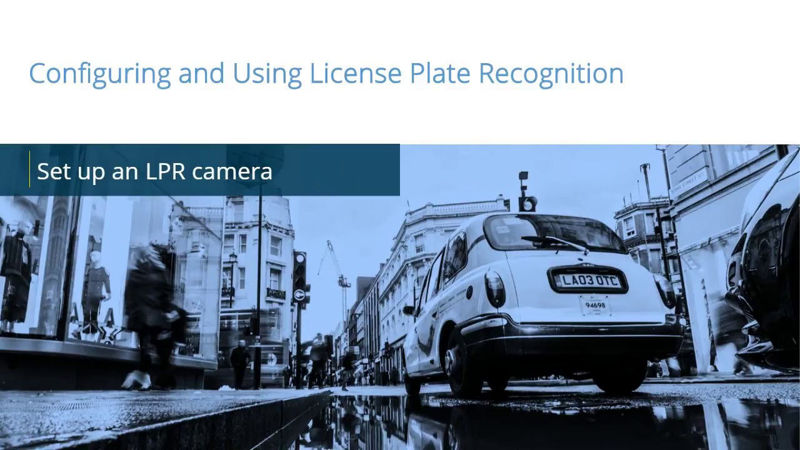License Plate Recognition: Essential Setup Tips for Optimal Performance
License Plate Recognition (LPR) technology has become an invaluable tool for traffic management, security, and law enforcement. However, its effectiveness is heavily dependent on the correct setup of both the camera hardware and software. This guide provides a comprehensive overview of the best practices for setting up an LPR system, ensuring high accuracy and reliability in capturing license plates.
Optimizing Camera Placement for LPR
The Don'ts
- Avoid Overreaching: Capturing too many lanes with a single camera can compromise the quality of license plate recognition. It's essential to limit the camera's range to ensure clarity and detail in the captured images.
- Be Careful with Angles: Incorrect camera angles, either too steep or too skewed, can hinder the ability to accurately capture license plates. Aim for a positioning as perpendicular to the license plates as possible.
The Do's
- Limit Target Lanes: Ideally, aim for one camera per lane. If not feasible, try not to exceed two lanes to maintain accuracy.
- Control Pan and Tilt: Keep the camera's pan and tilt within 30 degrees of the target plate to avoid distortion and ensure a clear view.
- Focus on Vehicle Rears: Since some regions do not require front license plates, targeting the rear of the vehicle is more reliable for capturing plate information.
- Use Physical Aids: Speed bumps and other traffic-calming measures can slow down vehicles, increasing the chance of a clear capture by creating longer transit times for analysis.
Camera Settings for Optimal Recognition
Manual Settings
Automated settings like auto gain, auto exposure, and compression can introduce noise, making it difficult to discern license plate characters. Manually adjust these settings to reduce noise and enhance clarity.
Contrast and Shutter Speed
- Contrast: High contrast settings help distinguish license plate characters from the background, improving recognition accuracy.
- Shutter Speed vs. Frames Per Second: A higher shutter speed can provide sharper images, essential for reading license plates accurately, and is not directly related to the camera's frames per second.
Special Camera Features
- Wide Dynamic Range and Headlight Compensation: These features can improve visibility of license plates under varying lighting conditions, especially at night.
- IR Illuminators: Ideal for night-time use, IR illuminators enhance the reflectiveness of license plates for clearer recognition.
Configuring the Camera and Software
Codec and Compression
- MJPEG Codec: Preferred for LPR due to its full-frame image capture, ensuring every frame is usable for license plate recognition.
- Compression Settings: Minimize compression to reduce artifacts that can blur details, aiming for the highest quality image possible.
Resolution and Framing
- Optimal Resolution: You don't need ultra-high-resolution cameras for effective LPR. Calculate the minimum resolution based on the width of the license plate and the distance from the camera to ensure clarity without overburdening the system.
- Focus Area: Fine-tune the camera's focus to concentrate on the area where license plates will be, disregarding irrelevant surroundings to improve system efficiency.
Practical Setup Advice
- Snapshot Analysis: Take numerous snapshots under various conditions to optimize camera settings and focus. Regular adjustments based on changing conditions can maintain or improve recognition rates.
- Area Definition: Clearly define the recognition area within the system to focus on license plates exclusively, enhancing accuracy and reducing false positives.
Implementing these practices can significantly enhance the performance of LPR systems, making them more effective tools for their intended applications. By paying close attention to camera placement, settings, and configuration, users can achieve higher accuracy rates and more reliable plate recognition, contributing to safer and more secure environments.
License plate detection rates with the XProtect LPR plugin are largely dependent on the environment in which the camera capturing the plates is deployed. The Administrator's manual for your specific product will have a more in-depth review of settings but here are some quick things to check to improve your results:
- Viewing Angle - Make sure the camera is positioned with the vehicle approaching and between 15-25 degrees horizontal and 15-30 degrees vertically viewing angle.
- Use the single line rule - You should be able to draw a single, horizontal line through a still image of the license plate that goes through both the left and right border.
- Minimum plate width - Make sure that the license plate is in the center or lower half of the image and that during an ideal snapshot the plate is a minimum width. For US: 130 pixels for stopped subjects or 215 pixels for subjects in motion. For Europe: 170 pixels for stopped subjects or 280 pixels for moving subjects.
- Suggested resolutions - Lower resolutions makes recognition quicker (though you don't want to go too low!). Too high of a resolution can take considerably more time to recognize and may introduce errors. In general using SVGA (800x600) in the US and VGA (640x480) in Europe are recommended.
- When setting up the LPR Plugin, make sure to use at least 20 snapshots (recommended: 40) - It may seem like a lot of snapshots, but each one will help improve accuracy and is worth the time. While 20 is the minimum number, in practice, using 40 or more turns out to be much better option. Use many different kinds of snapshots — for example, snapshots taken in low light; snapshots of plates taken at an angle; hard to read plates and easy to read plates; snapshots with good light quality; etc. If a country plate can come in different background colors, use snapshots with all the different possible background colors. The main point is, you need to "teach" the LPR and show to it all the possible conditions it could face when later it is used in real situations (in production).



